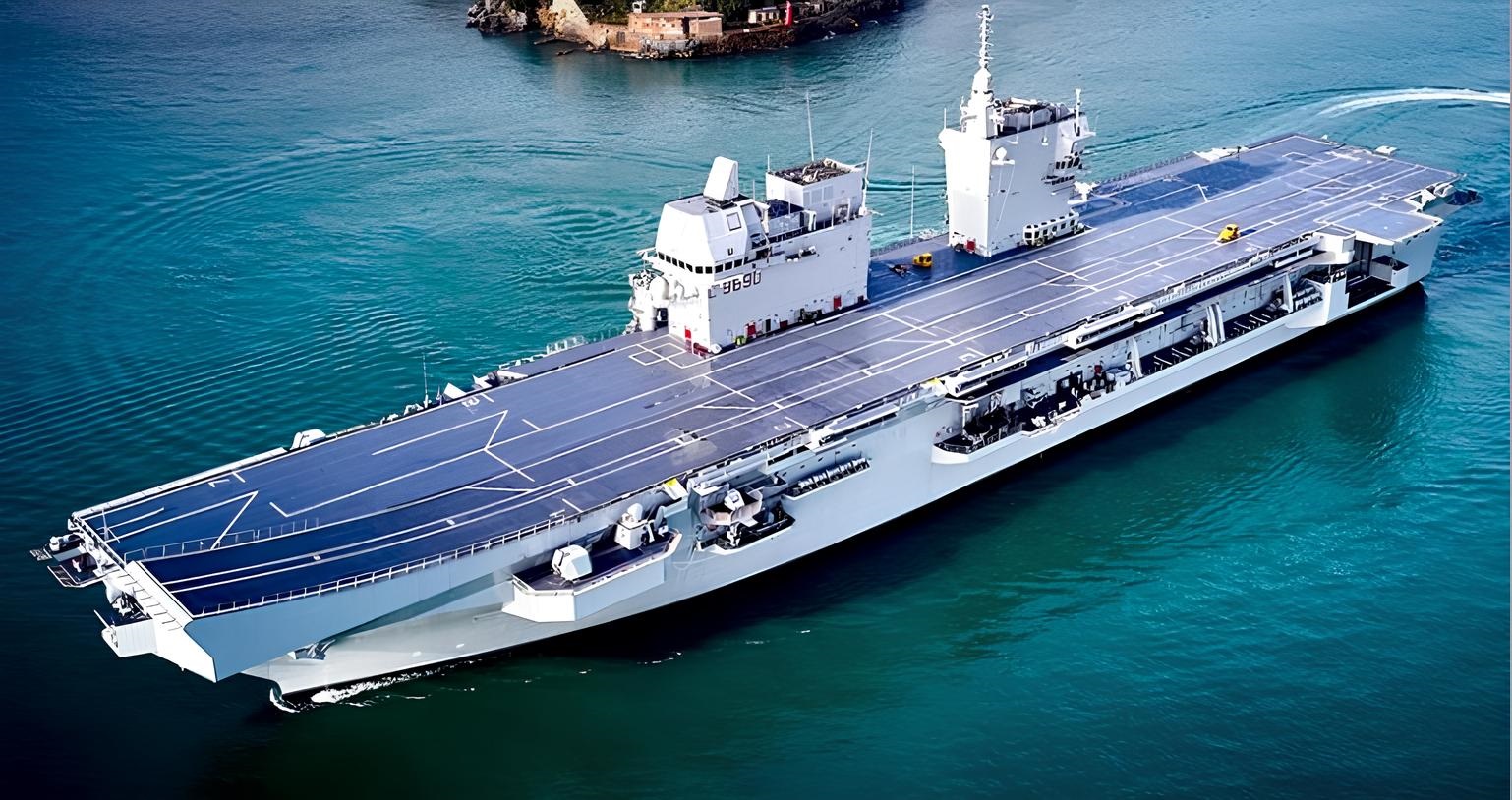Fincantieri delivered the ITS Trieste, a Landing Helicopter Dock (LHD), to the Italian Navy during a ceremony held on December 7 at the port of Leghorn. The event was marked by the presence of Italian President Sergio Mattarella, Defence Minister Guido Crosetto, Chief of Defence General Luciano Portolano, and Italian Navy Chief Vice-Admiral Enrico Credendino. During the ceremony, Naval Academy officer cadets also took their solemn oath aboard the vessel, adding a ceremonial touch to the event. The delivery of Trieste, the largest military ship built for the Italian Navy since World War II, represents the culmination of a 14-year project that began with the signing of a €1.1 billion contract between the Italian Ministry of Defence’s Naval Armaments Directorate (NAVARM) and an industrial consortium led by Fincantieri as the prime contractor, with Leonardo as the combat systems integrator. This deal also included logistical and training packages.
Designed under the ‘dual-use’ and ‘one fits all’ concepts, the Trieste is built to support a range of missions, from amphibious operations to humanitarian and disaster relief efforts. In addition, the vessel is capable of serving as an alternate aircraft carrier for Italy’s F-35B STOVL (Short Take-Off, Vertical Landing) jets when the primary aircraft carrier Cavour is unavailable for operational or maintenance reasons. Vice-Admiral Enrico Credendino highlighted the vessel’s versatility during the ceremony, describing it as a “technological marvel” capable of supporting Italy’s power projection and amphibious operations. He also emphasized the ship’s ability to integrate unmanned air, surface, and subsurface systems, positioning it as a key asset in Italy’s naval modernization efforts.

Homeported in Taranto and assigned to the 3rd Naval Division, the Trieste serves as the flagship of the Amphibious Task Group (ATG), complementing the Carrier Strike Group led by Cavour. Together, they form the backbone of Italy’s Expeditionary Task Force. The ship’s operational capability for F-35B jets will be achieved after modifications and certifications scheduled for 2025, overseen by the F-35 Joint Program Office in the United States. At 245 meters in length and with a displacement of 36,770 tonnes, Trieste boasts a flight deck that can accommodate both helicopters and fixed-wing aircraft, including the F-35B. Its aviation facilities allow for the deployment of up to 20 F-35B aircraft and two NH-90 helicopters, significantly enhancing Italy’s power projection capabilities. Additionally, the ship can support amphibious battalion operations, with space for 600 troops and a range of vehicles, including main battle tanks.
The LHD is equipped with cutting-edge technology and electronics developed under the Naval Law program. This includes Fincantieri Nextech’s SEASNavy Integrated Platform Management System and Leonardo’s SADOC Mk4 Command Management System. For communications, the ship relies on Leonardo’s software-defined radios and SATCOM systems, while its sensors suite features the StarFire X-band AESA radar and Kronos Power Shield L-band radar, providing long-range surveillance and missile detection. In terms of armament, Trieste is fitted with three Leonardo 76/62 mm Super Rapido guns, alongside remotely controlled 25 mm cannons. The ship is also prepared to integrate the MBDA SAAM Extended Self-Defence system, which would provide enhanced air-defense capabilities using Aster 15/30 missiles. With its robust capabilities, the Trieste represents a new chapter in Italy’s naval strategy, combining amphibious assault, disaster relief, and carrier operations into one versatile platform.















